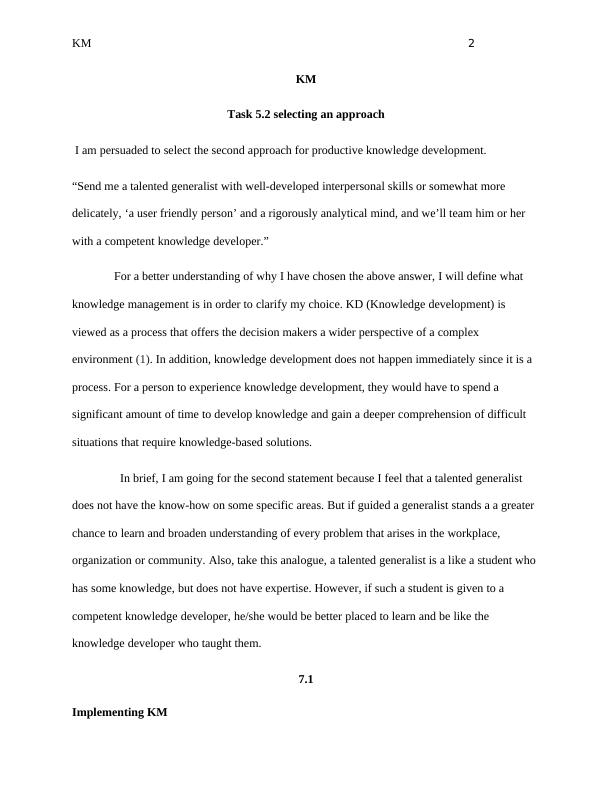Knowledge Management: Selecting an Approach and Implementing KM
Give your views on failure of implementation of knowledge management at a global company based on five distinct stages of knowledge management. In addition, provide an opinion on which approach would be more successful in knowledge development.
6 Pages1046 Words382 Views
Added on 2022-10-11
About This Document
This document discusses selecting an approach for productive knowledge development and implementing knowledge management in organizations. It explains the stages of KM implementation and the factors affecting it. The first part discusses the two approaches for productive knowledge development and why the second approach is preferred. The second part explains the five stages of KM implementation and analyzes a global organization case study to identify the factors affecting KM implementation.
Knowledge Management: Selecting an Approach and Implementing KM
Give your views on failure of implementation of knowledge management at a global company based on five distinct stages of knowledge management. In addition, provide an opinion on which approach would be more successful in knowledge development.
Added on 2022-10-11
ShareRelated Documents
End of preview
Want to access all the pages? Upload your documents or become a member.
Knowledge Management in organizations
|9
|2613
|339
Project Report on Knowledge Management
|5
|708
|53
Assignment of problems and opinion of the Enquiry on the case of Bristol Royal Infirmary
|6
|1755
|346
Industry Project Management- Project Plan and Results Report
|12
|1194
|91
Understanding Business Environment
|5
|1301
|10
Work Related Learning: Key Competencies, Career Prospects, and Progression Opportunities
|8
|2421
|172



